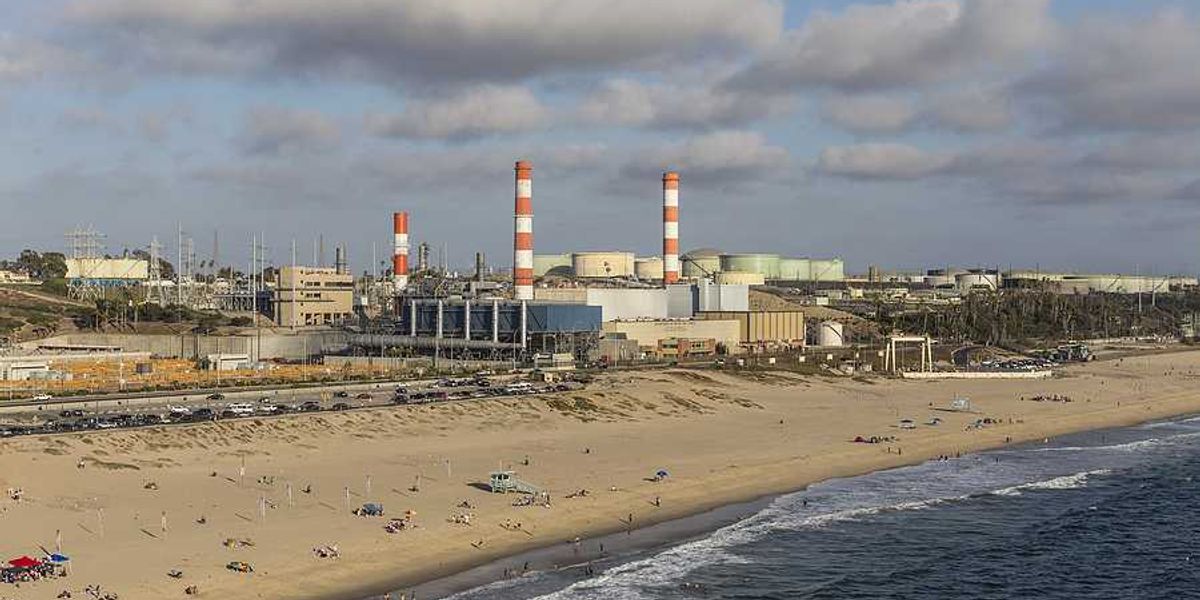extractive development
States profit from lands on tribal reservations, hindering tribal sovereignty
Tribes are forced to lease their own lands from states, which profit from resources like timber, gas, and minerals, while tribal sovereignty and environmental management are undermined.
Anna V. Smith and Maria Parazo Rose report for High Country News and Grist.
In short:
- State trust lands, once seized from tribes, are leased for public institutions like schools and hospitals, often benefiting non-Indigenous citizens.
- Tribal nations, such as the Ute and Confederated Salish and Kootenai Tribes, lease millions of acres from states for agriculture and resource use.
- Tribes are pushing for land return through programs like Montana’s land exchange, but legal barriers, such as subsurface mineral rights, complicate the process.
Key quote:
“Hundreds of thousands of millions of dollars that could have perhaps been used to educate, to create housing, to create economic opportunity have been lost to the tribes.”
— Minnesota State Senator, Mary Kunesh
Why this matters:
Land leasing affects tribal sovereignty and limits Indigenous management of vital ecosystems. To use these lands, the tribes themselves often have to pay, a grim irony considering these territories were once meant to be set aside for their exclusive use. Read more: Why Indigenous women are risking arrest to fight Enbridge’s Line 3 pipeline through Minnesota.
Wildfires are pushing Alberta's caribou to the brink
The relentless wildfires in Alberta are decimating the already endangered woodland caribou population, raising urgent questions about their survival.
In short:
- Alberta's woodland caribou are losing critical habitat to unprecedented wildfires, with 2023 alone seeing over 5% of their range destroyed.
- The caribou, adapted to old-growth forests, now face threats from more frequent and severe fires, further compounded by human disturbances like logging and oil extraction.
- Indigenous communities and environmental groups are increasingly alarmed, noting that without immediate action, caribou may vanish from Alberta's landscape.
Key quote:
“It’s a question that could extend beyond caribou. How do we account for climate change and these larger events, whether it’s wildfires, rain, snow or flooding, in management plans and conservation efforts?”
— Laura Finnegan, caribou program manager, fRI Research
Why this matters:
With only 2,000 of these animals remaining in Alberta, the question looms: can they adapt quickly enough to survive, or are we witnessing the final chapter in the story of these once-thriving herds? Read more: US wildfires’ increasing toll on wildlife.
Biden administration safeguards millions of acres in Alaska from industrial harm
The Biden administration announced protections for 28 million acres in Alaska, blocking industrial activities to preserve Indigenous communities, wildlife and ecosystems.
In short:
- The Interior Department has blocked a 211-mile road essential for a planned copper and zinc mine, citing potential harm to Alaska Native communities and wildlife.
- The protected lands include critical habitats and have been at the center of a long-standing debate over industrial development versus environmental conservation.
- Alaska lawmakers are pushing back, with some introducing legislative measures to counter the administration's decisions.
Key quote:
“D1 lands in the Yukon-Kuskokwim region are vital to our people’s way of life — these protections ensure future generations will be able to live safely with and on the land, carrying our customary and traditional knowledge.”
— Anaan’arar Sophie Swope, executive director of the Mother Kuskokwim Tribal coalition
Why this matters:
Protecting these lands helps protect Alaska Native cultures and ecosystems, addressing long-standing environmental and subsistence concerns while increasing the tension between economic development and conservation efforts in the resource-rich region. Read more: Biden’s Arctic drilling go-ahead illustrates the limits of democratic problem solving.
Indigenous tribes advocate for co-management of sacred lands
Indigenous tribes in northern California seek greater decision-making power over sacred lands recently protected by a national monument expansion.
In short:
- The Yocha Dehe Wintun Nation and allies have successfully lobbied to include Molok Luyuk in the Berryessa Snow Mountain National Monument, protecting it from wind farm development.
- Tribes are negotiating a co-stewardship agreement with federal agencies, aiming for stronger management roles over Molok Luyuk, though full co-management requires congressional approval.
- True co-management, as seen in Bears Ears National Monument, grants tribes significant decision-making power, integrating traditional knowledge into federal land management.
Key quote:
“Co-management means decision-making authority. Co-stewardship means one entity still has the decision-making authority.”
— Melissa Hovey, Berryessa Snow Mountain National Monument manager.
Why this matters:
Empowering Indigenous tribes in land management enhances conservation efforts and acknowledges their traditional ecological knowledge while honoring sacred sites. Read more: Giving Bears Ears and Grand Staircase-Escalante the protection they deserve.
Preserving the Owyhee Canyonlands: the push for monument status
Local advocates are urging President Biden to create new national monuments in order to meet his administration's conservation goals, but the push has encountered resistance from some locals in the region.
In short:
- The Owyhee Canyonlands are one of the last intact sagebrush habitats in the Western U.S., spanning around 7 million acres across three states.
- Threats to the region include invasive species, mining, and suburban development, leading advocates to push for national monument designation to protect the area.
- A coalition is working to urge President Biden to use the Antiquities Act to protect 1 million acres of the canyonlands, but legislation faces political hurdles.
Key quote:
“National monuments really are the most effective tool that we have as a country to protect biodiversity and ward off this extinction crisis.”
— Kate Groetzinger, communications manager for the Center for Western Priorities
Why this matters:
Conserving the Owyhee Canyonlands is crucial for maintaining biodiversity and protecting the region's fragile ecosystem, which is threatened by development and climate change. Read more: Giving Bears Ears and Grand Staircase-Escalante the protection they deserve.
Senators grill Haaland on Biden's energy strategy
Interior Secretary Deb Haaland faced intense scrutiny from senators regarding the Biden administration’s energy policies during her appearance before the Senate Energy and Natural Resources Committee.
In short:
- Sen. Joe Manchin accused the Biden administration of prioritizing politics over long-term strategy and criticized Haaland for a lack of progress on energy-related decisions.
- Republicans, including Sen. Lisa Murkowski, denounced recent Interior decisions that limit Alaska’s development, specifically in oil, gas, and mining projects.
- Haaland defended her policies, stating she provides vision and direction while others detailed specific issues, like the Lava Ridge wind energy project.
Key quote:
"The radical climate advisers in the White House have put election-year politics ahead of a thoughtful and achievable long-term strategy for the country."
— Senator Joe Manchin.
Why this matters:
As the Biden administration aims to align energy policy with environmental goals, the scrutiny from senators signals a growing divide on energy and climate priorities and ongoing struggles to reduce greenhouse emissions. Read more: Natural gas vs. renewable energy — beware the latest gas industry talking points.
New rule prioritizes conservation on US public lands
A new rule introduced by the Biden administration aims to balance conservation with economic activities on America's public lands, enhancing protections and sustainable use.
In short:
- The rule impacts 245 million acres, promoting ecological restoration and compensating for environmental damage.
- Conservation will now be considered as significant as grazing, mining, and other land uses.
- The measure responds to the increasing environmental pressures such as climate-induced wildfires and droughts.
Key quote:
"As stewards of America's public lands, the Interior Department takes seriously our role in helping bolster landscape resilience in the face of worsening climate impacts."
— Deb Haaland, U.S. Secretary of the Interior.
Why this matters:
This policy represents a strategic shift in how public lands are managed, intertwining ecological health with national economic and security interests, and addressing the urgent challenges posed by climate change. Read more from EHN's newsroom: Public lands are not neutral. We must grapple with their racist roots.









